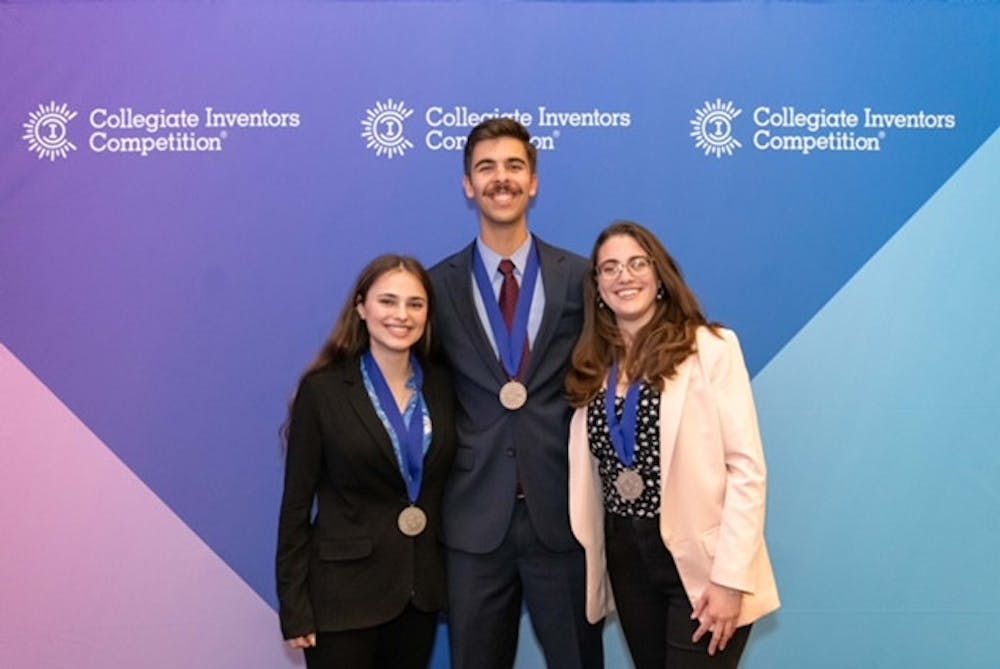Innovation in biomedical engineering is accelerating nationally and at Hopkins, a team of ambitious students is similarly pursuing new engineering challenges in the realm of fetal surgery. Led by current Center of Bioengineering Innovation and Design Master’s student Selena Shirkin, the team’s FetalCare Port System aims to address complications in fetal therapy procedures by providing a safer alternative to existing techniques.
The team began their work almost two years ago as an undergraduate design team in the biomedical engineering department and were unfamiliar with the field of fetal therapy.
“Our whole team knew nothing about fetal surgery at the beginning. It sounded like something out of a sci-fi book,” Shirkin said in an interview with The News-letter.
Of the nearly 3.7 million babies born in the United States each year, 120,000 are born with a birth defect. Fetal surgery is the performance of life-saving interventions on a developing fetus while within the womb. To access the uterus and perform surgery, surgeons must begin by using an entry port system, which acts as a tunnel into the uterus to insert tools and repair the birth defect. Some conditions that are treated via fetal surgery include spina bifida, twin-twin transfusion syndrome, congenital diaphragmatic hernia and lower urinary tract obstruction.
The current tools for fetal therapy are not designed for the procedure, and surgeons generally use sheaths adopted from other endoscopic surgeries as a port system into the fetal environment.
“The current device [clinicians] use is a vascular sheath,“ Shirkin stated. “It looks and feels like a plastic straw.”
These current port systems push beyond the uterine wall and can rupture the amniotic membrane, resulting in preterm birth. Complications can place a heavy financial burden on families due to unplanned emergency delivery and hospitalization.
“During fetal surgery, you’re operating on the [uterine] environment and you’re causing a disturbance to the uterus. And because you’re doing that, you cause contractions. When the uterus contracts, it applies force to this ‘plastic straw’ and it can bend,“ Shirkin explained. “These devices are just not designed for the uterine environment at all…Our research that we’re about to publish shows how these devices are just not optimal for [fetal surgery] procedures.”
Shirkin and her team, including biomedical engineering Master’s student Eric McAlexander and members Gloria Kalnitskaya, Ayeeshi Poosarla and Alice Yu, recognized the need for a specialized device designed for fetal therapy. Instead of forcing an access port that risks membrane damage, the team’s designed a radially expandable entry point, starting at a minimal diameter (2 mm) and gently expanding to 4 mm. By embracing a design that is compatible with the natural elasticity of the uterine environment, the team hopes to mitigate the risk of membrane rupture and potentially reduce complications from fetal surgery.
Developing such a nuanced solution required more than engineering skills alone. The team engaged in extensive conversations with fetal surgeons, whose input was instrumental in shaping their design.
Consulting these experts also uncovered a major knowledge gap in fetal surgery research: very little is known about how the amniotic membrane stretches during pregnancy or why complications such as membrane rupture occur during fetal surgery. In addition to refining their solution concept, Shirkin and her team launched experimental studies to fill these gaps and enhance the understanding of the mechanism of membrane rupture and why preterm birth are induced by fetal surgery.
The team’s efforts have not gone unnoticed. In October 2024, they were selected as the undergraduate runners-up, winning a $5,000 prize and a provisional patent, in the prestigious Collegiate Inventors Competition, which recognizes promising innovations with the potential to make a real-world impact. Alongside their clinical mentors, the team has benefited from guidance provided by experienced biomedical engineers Dr. Elizabeth Logsdon and Michelle Zwernemann.





